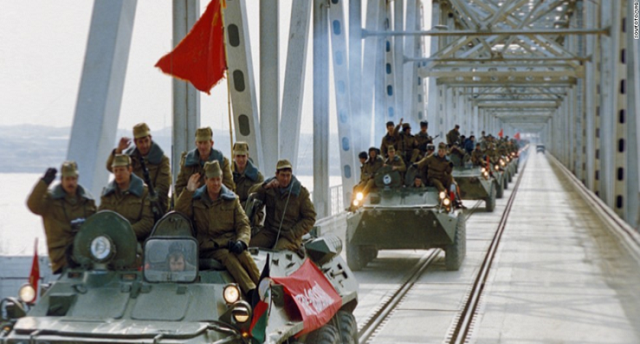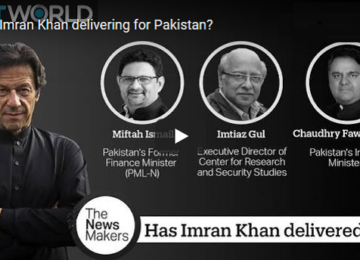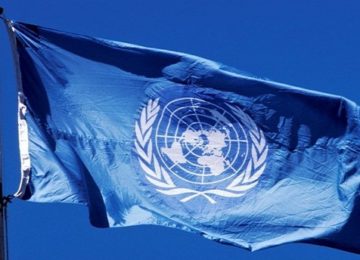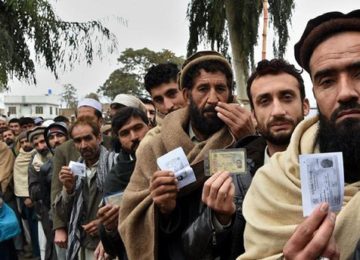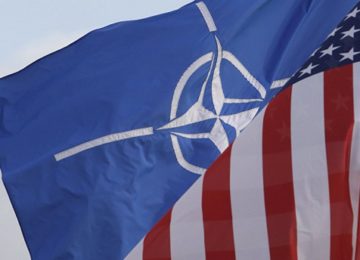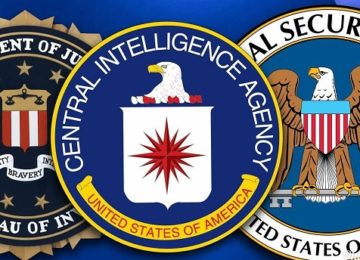After the leftists of the People’s Democratic Party of Afghanistan (PDPA) seized power in the Saur Revolution of April 1978, the Soviet Union became Kabul’s key backer, to the extent of invading the country in 1979 to prevent local insurgencies and military rebellions toppling its new ally. AAN’s Thomas Ruttig here explores the relationship between the Soviet Union and the successive PDPA governments and armed forces that it backed, in an attempt to clarify how the chain of command worked. This is important because a person in authority who orders a war crime or fails to stop it being committed is considered guilty of that crime. The issue here is: who was actually in command in the PDPA governments and armed forces.
The paper published below was originally commissioned by the Afghanistan Independent Human Rights Commission’s (AIHRC) for its ‘conflict mapping report’. The AIHRC report detailed the war crimes during all the various phases of the Afghan war from the Saur Revolution to the fall of the Taleban. It brought together both published sources and fresh investigations into the war crimes and crimes against humanity allegedly committed in each of Afghanistan’s provinces. Thomas Ruttig’s analysis of the PDPA and Soviet relationship was part of a chapter which detailed the command structures of the various parties to the conflict between 1978 and 2001. Who gives the orders and who actually has the authority to ensure they are implemented are critical issues when trying to determine responsibility for war crimes – hence the Commission’s interest in mapping this out.
Unfortunately, his chapter like the rest of the AIHRC conflict mapping report has never been published. An earlier ‘mapping report’ by the United Nations, which was published briefly in 2004 and then taken down from the UN website (it was cached, however, and can be read here). The report took more than six years to research and write, starting from 2005.
However, the Commission leadership felt that, in the absence of support from then President Hamed Karzai, in the last years of its presidency, the threats its staff faced from politicians who assumed they appeared in the report were too great. They also felt that for such a report to be beneficial, it should not just be dumped on the internet, but be part of a process of national reconciliation and truth-telling where Afghans could find out about what happened in parts of the county and eras they had no personal experience of. Commission staff, an internal survey found, were predominantly in favour of publishing, partly because they felt a duty to the witnesses and survivors they had interviewed. Then, in December 2011, Karzai dismissed two key members of the commission and left the body in limbo, appointing new members only 19 months later. The report was quietly put aside.
President Ashraf Ghani, speaking ahead of the 2014 election, told AAN he would publish the report if elected, “I don’t have any problem with publishing. What I want is a genuine Afghan reconciliation process. We’re tired of blood. We need to reach closure.”Chief Executive Abdullah was more hesitant; he did not know about the report, but when told about it was worried that it might refresh the “wounds of the past,” rather than curing them.(1) The National Unity Government has not published it.
Who gave the orders during the PDPA era, as during all the other phases of the conflict, is significant. All the PDPA administrations committed major war crimes. The first two governments under Presidents Nur Muhammad Tarakay and Hafizullah Amin (1978-1979) disappeared tens of thousands of citizens, carried out torture and massacres of civilians (read more about them in the third part of AAN’s series on the Saur revolution, by AAN guest author, Patricia Gossman). Under the presidencies of Babrak Karmal (1979 to 1986) and Najibullah (1986 to 1992), after the Soviet invasion, torture became more systemic under the newly created KhAD intelligence service, modeled on the KGB, and sham trials with many executions. Both Soviet and Afghan government forces carried out indiscriminate bombing of the countryside which resulted in mass casualties and the forced displacement of five million Afghans to Iran and Pakistan. (For more detail, read the report “Casting Shadows” by the Afghanistan Justice Project here.)
The Evolution of the PDPA and its Relations with the Soviet Union
The beginnings: In the underground
The Hezb-e Demokratik-e Khalq-e Afghanistan, or the People’s Democratic Party of Afghanistan (PDPA), was founded on 1 January 1965 in Kabul. Most of its 27 founding members belonged to Marxist study circles that had sprung up in the early 1960s, some with a more social democratic outlook. The earliest one reportedly goes back to 1956 even.[1]
A number of these circles “avowed themselves to Marxism-Leninism and referred to themselves as communists”; some had military officers amongst its members.[2] The participants of the PDPA founding congress elected Nur Muhammad Tarakay[3], a teacher, and Babrak Karmal, a former students’ leader, as head of its Central Committee and his deputy. Both became heads of state later under the Soviet-backed regime.
The PDPA was one of the political groups that took advantage of the political opening that followed the adoption of the 1964 constitution. The new constitution had turned Afghanistan from an absolute into a constitutional monarchy that included elements of parliamentarianism. It allowed the formation of political parties for the first time in Afghanistan’s history. The envisaged law on political parties that was passed by the parliament, however, was never signed by King Muhammad Zaher Shah. Subsequently, the emerging parties remained in a legal limbo. The PDPA, officially respecting the legal situation, continued to work but did not call itself a “party” publicly, but Jerian-e Demokratik-e Khalq, “People’s Democratic current”, instead. While the moderate groups discontinued their activities, the more radical groups on the left (the two main Marxists currents) and the right (different Islamist groups) went underground and started to infiltrate the armed forces. The blockade of emerging party pluralism led the way to use of violent means to obtain political power.
In 1973, military officers linked to the Parcham faction supported the coup d’état of Sardar (Prince) Muhammad Daud. A number of Parcham members joined the government as ministers but the group was sidelined by Daud from 1975 onwards, under the influence of his beginning tilt towards the Shah’s Iran. Afghan history started repeating itself when military officers close to Khalq and Parcham – urged by Moscow and the Communist Party of India, both factions had re-united in 1977 – toppled Daud and killed him as well as most members of his family on 27 April 1978. This event, technically a military putsch, was labeled the ‘Saur revolution’ by the party.
From its beginnings, the PDPA faced internal factionalism. The party already split in 1967 into Khalq and Parcham, both named after the party’s early periodicals. While Khalq members mainly were Pashtuns, Parcham was predominantly considered to be non-Pashtun although its most prominent leaders – Khaibar, Karmal and late president Dr. Najibullah – actually also were Pashtuns (Karmal a detribalized one, he mainly spoke Dari.) In August 1968, North-based Settam-e Melli, or ‘[Against] National Oppression’, led by Central Committee member Taher Badakhshi, broke away because, in contrast to the two main factions, it considered the ‘national question’ more important than the ‘class question’.
While the PDPA, between its establishment and April 1978, was one amongst various political groups in Afghanistan, it turned into the ruling party when two days after the 27 April coup Tarakay took over as head of a mainly civilian Revolutionary Council from the initial Revolutionary Military Council. This signified the political takeover of the party from the military.
Despite its rhetorical commitment to a ‘broad front of all progressive forces’, the PDPA immediately established a one-party system in Afghanistan, imitating the countries of the Soviet bloc. The Khalq-Parcham split re-emerged and the ruling Khalqis officially declared five groups their enemies: Parchami, the Islamists, the Maoists, the Settamis and the Pashtun nationalist of Afghan Mellat, along with independent intellectuals. Many people that belonged to those categories – or were perceived to do so – were arrested, killed or ‘disappeared’, sometimes with their whole families. The Khalqis’ internal purges of the party were reciprocated by the Parchamisafter they came to power in the wake of the Soviet invasion over Christmas 1979. That perpetuated the split between the two factions, actually up to today.
How ‘communist’ was the PDPA?
In his inaugural speech [at the PDPA founding congress] in 1965, Tarakay used terminology like ‘class struggle’, eulogised the Russian October Revolution of 1917 and called the PDPA “the party of workers and peasants”. He said that “it is obvious to you all that our party is the party of the working class” and that it “struggles in conformance with the epoch-making ideology of the workers.”[4] The initial party program of 1966, however, avoided openly characterising the party as a ‘Marxist’ or ‘communist’. As its aim, it defined the “establishment of a national democratic government” composed “from the national progressive democratic and patriotic forces, ie the working class, the peasants and the national bourgeoisie.”[5] This terminology conformed with the ‘stage theory’ of revolutionary change that was a central part of Marxism-Leninism, the ideological basis of the Soviet-led communist bloc. The PDPA wanted to qualify as one of those ‘brotherly parties’. This terminology was maintained in the unity document of 1977 when Khalq and Parcham merged again.
Encouraged by it successful and initially not strongly opposed takeover in 1978, the party began to use Marxist terminology more openly. At Kabul International Airport, a signboard greeted visitors with the slogan “Welcome in the country of the second model revolution” (after the Lenin’s October Revolution in Russia), proclaiming the PDPA regime nothing less than the model for revolutionary change in the Third World. Later in the same year, Hafizullah Amin stated that the aim of his party was to “establish a society free of exploitation”[6], ie socialism/communism. In a bold step, the party changed the traditional national flag to its own red one. Still, terms like ‘Marxism’, ‘communist’ or ‘socialist’ were not used to publicly describe the party and its program.
This was done by Parcham in the wake of the Soviet military intervention, although it is usually considered more moderate than Khalq. In 1985, in a speech on the occasion of the PDPA’s 20th anniversary, Karmal went as far as calling the PDPA “the new typus party[7] of the proletariat and all working people of the country” the aim of which was to build “the Afghan society on the basis of socialism.”[8] This was an attempt to put the PDPA on par with the ruling parties of the USSR and its closest allies.
The state-party relationship: ‘Sovietisation’?
Contemporary Western authors broadly agree that the USSR – after its military invasion in late 1979 – intended to ‘sovietise’ the Afghan regime and incorporate it into its system. According to Hammond, ‘sovietisation’ consisted of two main elements: (1) the fact that Soviet advisors run many government offices (this included the military and security apparatus] and took the important decisions; (2) government, the party, mass organisations, the educational system and the economy were “all remodeled to imitate the Soviet pattern.”[9] Arnold even saw that “by the close of 1979, the PDPA no longer ruled Afghanistan; the CPSU [Communist Party of the Soviet Union] did.”[10] Indeed, the Soviet party leadership had established a powerful Afghan task force on the level of its Polit Bureau in October 1979. The number of military and civilian advisors increased drastically. After the invasion, “almost all affairs (…) were handled by {KGB chief] V.A. Kryuchkov’s men, and by him personally.”[11]
Virtual Soviet control and ‘sovietisation’ might be two different things. Bodansky sees a shifting Soviet perception of the PDPA regime early on: Soon after the invasion it realised “that the country was not a ‘socially developed’ state ripe for Socialism”, after it had initially accepted Afghanistan as a ‘socialist’ state in the making when the Saur revolution occurred. In contrast, Dorronsoro says that Soviet attempt to turn Afghanistan into another “Central Asian Republic” lasted till 1986, when “the failure of their project drove them to prepare the ground for withdrawal and to push for the ‘policy of national reconciliation’.”[12]
Initially, the Soviets had assumed that their intervention would be short-termed. In the country, the Soviet leadership soon found out that the Afghan government was already in crisis and saw itself forced to concentrate on stabilising it. This included the dispatch of massive numbers of advisors on all levels and in all spheres, in the party and its ‘mass organisations’ [ie youth, women’s organisations and trade unions], the government and the armed forces, from the national level at least to the provinces.[13]
While the USSR already had advisors and some military personnel in the country under Daud, this further increased after the Saur revolution to between 3000 and 4000 civilian advisors in late autumn 1979. This number more than doubled after the military invasion, “easily surpassing total PDPA membership.”[14] The largest group worked in the party structures; 80 advisors and 50 translators in the PDPA Central Committee alone and 50 in the PDPA youth organisation in 1983.[15] In 1987, there were 9000 advisors in the civilian bureaucracy. A CPSU Polit Bureau meeting designed “several points on which the Afghan leadership could be allowed to make its own decisions (…). PDPA documents were freely changed by Soviet advisors before being circulated, (…) foreign policy statements were written by them.” Amongst advisors, “KBG personnel were dominant.”[16] According to Michail Vorontsov, the last pre-withdrawal Soviet ambassador to Kabul (in the rank of a Deputy Foreign Minister), “we were always doing things for them our way, expecting them just to stand by and watch.”
Parallels were drawn to the successful integration of the Russian areas in Central Asia into the Soviet Union that had been equally backward in their social and infrastructural development in the 1920s as Afghanistan was then. Witnessing the shortcomings of the Afghan regime to safeguard its power, it substituted local decision-making perceived as ineffective by taking it over – a Soviet form of mission creep.
Constant references to Lenin’s writings in which he had warned against spreading communism in Afghanistan in official Soviet and other Eastern bloc media, however, bear witness to the fact that the USSR did not believe in Afghanistan’s development towards socialism anymore. As a former UN envoy for Afghanistan confirms, “Moscow made its first serious attempt to find a way out of the Afghan quagmire during the fifteen-month tenure of Yuri Andropov, from November 1982 until his death in February 1984.”[17] Restructuring all Afghan institutions according to the Soviet model was the only way the Soviet advisors knew how to organise a country.[18]
It seems that it was the PDPA, not the Soviets, who tried to copy the Soviet model for Afghanistan. First, it already had structured its internal party set-up according to the Soviet model, with a Central Committee (CC) as its leadership, before the takeover of 1978. Nevertheless, PDPA representatives were never invited to gatherings of the CPSU-led communist world movement before 1978. Soon after, facing growing resistance throughout the country, it had become clear to the PDPA leaders by then that its survival was dependent on Soviet support and even a Soviet military presence. The request to send Soviet troops had already been issued under Tarakay and Amin.
So, they went along with more ‘sovietisation’. In the party, now a Polit Bureau, a CC Secretariat, a countrywide structure with party organisations at the province, district and village level, in enterprises and in the armed forces were established. From 1978 onwards, “all party and governmental matters were carried out by the [PDPA] Polit Bureau.”[19] The cabinet became a Council of Ministers and the Revolutionary Council was subordinated to the PDPA, with the party’s chairman automatically its head. This was “the leading role of the party’ over the state and the whole society, another key element of Marxist-Leninist doctrine, codified in the “Basic Principles of the Democratic Republic of Afghanistan,” the provisional constitution that was in force from April 1980 until the adoption of the constitution of Najibullah’s ‘reformed’ Republic of Afghanistan in 1987. Its article 4 stipulated that the PDPA “will be the leading and mobilizing force of the society and the state,” ie the party dominated the state and not vice versa.
The party and the armed forces
Facing increasing resistance by the mujahedin, the PDPA from the beginning attempted to strengthen its political control over and coordination of the armed forces. In June 1979, the PDPA sent 1500 political instructors into the armed forces. Party decisions on a better organization of conscription (1982) and on the ‘patriotic education of the youth’ – to mobilise recruits – were taken. 86 per cent of all army units had a party organisation and the Social Science Institute had begun training cadres for army. In 1985, it appointed a special Central Committee secretary for this task.[20] An East German source assessed, however, that the “ideologisation” of the Afghan armed forces still was a “major task“ at this time.
The officer corps still lacked discipline and was influenced by ‘tribal’ conflicts.[21]
By December 1979, 30 per cent of all PDPA members served in the armed forces. In 1983, 19,320 of the army personnel (including the border troops) were PDPA members or candidates – roughly 40 per cent of the really existing personnel. On the other hand, 60 per cent or more of all PDPA members served in the army. But the party lost experienced cadres both due to internal purges, defections and in the fight against the mujahedin. “Young and inexperienced officers“ took their place and the party’s influence decreased.[22]
Particular attention was given to the intelligence service. The old one, the notorious, 7000-strong KAM with its Khalqi dominance, was completely abolished after Amin was toppled and the Soviet KGB assisted in building up the Parcham-dominated KhAD from 1980 onwards. Its personnel rose from 5,100 (1980) to 90,000 (1990), the budget increasing 300fold. 75 per cent of regional police commanders and 85 per cent of the political officers in the police still were Khalqi.[23]
When the Soviets stepped in, a ‘Soviet’ framework already existed and they were almost forced to follow its logic. Cordovez and Harrison describe KGB chief Kryuchkov’s 1978 Kabul mission when he found that key decisions about government structures were already taken by Tarakay and Amin.[24] They also could not get out of the self-set ideological trap that Afghanistan’s revolution – as the ones in Angola, Mozambique, Ethiopia, Nicaragua and elsewhere – must be protected because the ever-growing ‘expansion of the socialist world system’ was ‘irreversible’. Everything else would be a loss of prestige a super power could not accept.
Kalinovsky even argues that calling this process a ‘sovietisation’ goes too far and that Soviet advisors tried to caution the Afghan party leaders in their revolutionary enthusiasm. He argues that this Soviet exercise in nation-building “had little to do with the desire to spread communism [but r]ather (…) were motivated by a desire to stop the deteriorating situation” in Afghanistan and prevent it from turning towards the US. It was “composed of ‘off the shelf’ components, not a master plan […], founded on [Soviet/Marxist] ideas but improvised in practice.”[25]
Conclusion
In summary, the PDPA can be described as a wannabe communist party that from its establishment – not very openly, but clearly enough – declared its ambition to be part of the Soviet-led ‘socialist world system’. Before 1978, however, it was ideologically kept at arm’s length by the USSR and its allies. When it became a ruling party in that year, it followed an ‘embracing strategy’ that forced the USSR, bound to its ‘Breshnev doctrine’ that revolutionary change must be ‘irreversible’, to support its regime. First request to send Soviet troops to Afghanistan were already issues by Tarakay and Amin.
The 1979 intervention had two contrary effects on the relationship between the PDPA and the CPSU: The PDPA followed a strategy of further expanding its copycat Soviet model to present itself as an indispensable ally while the Soviets, realising that the social and political situation in Afghanistan was not ripe for a socialist development, cautioned the PDPA in its ‘revolutionary’ development and, under Gorbachov, concentrated on withdrawal, ready to sacrifice its erstwhile ally. But the fate of both was already inseparably linked to each other.
In reality and despite its rhetoric, the PDPA was far from being a wholesale ‘communist’ party. Many PDPA members were primarily driven by progressive ideas of a secular, anti-Islamist and not necessarily Marxist colour. In the framework of the East-West polarisation, the party could either link up with Washington or Moscow. How thin the communist furnish of the PDPA was, became apparent after the Soviet military occupation. It considerably raised anti-Soviet feelings that had not existed amongst most Afghans before 1978, due to rather successful Soviet economic assistance. Now, many in the ranks of the party and in particular most members of the Khalq faction that had been toppled developed anti-Soviet feelings. The same happened with the pro-Babrak Karmal sub-faction of Parcham after he was replaced by Najibullah and even stronger after the Soviet Union had made public its withdrawal decision. Then, the Karmalists accused the USSR of ‘selling out the Afghan revolution’.
The 1978-89 period is described as one of “constant disputes between Soviet and Afghan officials,” and of persistent obstruction, overt and covert, by the latter of the policies that Moscow was advocating. The story of Afghan-Soviet relations throughout this period is therefore one of the “inability of the Soviet leadership, despite Kabul’s reliance on its economic and military support, successfully to impress its policies on the PDPA leadership.”[26] In general, there was a deep gap between official proclamations and what even party leaders and members really thought and did. Many party and military cadres secretly supported the mujahedin.
In the result, although party and governmental institutions were shaped according to the Soviet model during most of the 1980s, ‘sovietisation’ had remained superficial. Most of what achieved here was rolled back after President Najibullah, from its official announcement in January 1987, had started his siasat-e ashti-ye melli, or national reconciliation policy. Its aim was to stabilise the regime by de-ideologicising it and broadening its base. This new course was encouraged, if not designed by the new Soviet leadership under Michail Gorbachov who had decided to end the occupation and strengthen Najibullah’s regime so that it could stand on its own feet both militarily and economically. This process culminated in July 1990 when, at its first – and last – congress since 1965, the PDPA was renamed Hezb-e Watan, Fatherland Party. Najibullah stated that it had been “a historic mistake” to have come under “a specific ideology.” In its new program, Hezb-e Watan committed itself to a “democracy based on a multi-party system.” The party – at least nominally – gave up its monopoly over state power and allowed other political parties to organise, offering that opportunity also to the mujahedin. However, almost the complete PDPA leadership was transferred to the new party and it tried to get away with a ‘leading role’ in disguise. For example, during the 1988 parliamentary elections it secured the majority of seats through a rather thinly camouflaged system of allocating seats to its mass organisations and allied leftist parties.
Despite the ideological disarmament, the institutions and the internal chain of control-and-command remained comparatively strong and centralised. Reporting was systematic and leadership centralised in the person of Dr Najibullah as chief of the state and the party. What was reported, however, often had not much to do with reality. There were large gaps in the system and factionalism that was never overcome undermined effective control.
Despite the omnipresence of Soviet advisors – many of them badly prepared to work in Afghanistan and to understand Afghans[27] –, Afghan leaders were able to maintain space for independent manoeuvering and decision-making. The room for this was provided by the notoriously segmented Afghan structures, factionalism and political power games as well as the institutional and personal rivalries amongst the different groups of Soviet advisor. In effect, the decision-making on the ground and subsequently the political responsibility was shared between Afghans and Soviets. There was no almighty Soviet domination.
[1] For more details on the PDPA’s early years and political parties in Afghanistan in general see: Thomas Ruttig, Islamists, Leftists – and a Void in the Center. Afghanistan’s Political Parties and where they come from (1902-2006), Kabul : Konrad-Adenauer-Stiftung, 2006.
[2] There were at least two left-wing underground officer groups that prepared for a coup d’etat: the Revolutionary Army Organisation headed by A.S. Angar and ideologically led by Parcham’s chief ideologue Mir Akbar Khaibar, who untiringly tried to unite the party’s main factions until his killing in 1978. This group was founded in 1964, had 60 officers as members and later joined Parcham. The second group was the United Front of Afghanistan’s Communists headed by later Minister of Defense Abdul Qader. It was founded in 1974, had 600 members and 2000 sympathisers. Joachim Ludwig, Einige Probleme der Strategie und Politik der Demokratischen Volkspartei Afghanistans (DVPA) in der nationaldemokratischen Revolution in Afghanistan (1978 bis 1985), Dissertation, Berlin: Akademie für Gesellschaftwissenschaften beim ZK der SED, 1986, p. 32, 43, using ‘internal information from the PDPA‘.
By Special Arrangement with AAN. Original link.
Disclaimer: Views expressed on this blog are not necessarily endorsed or supported by the Center for Research and Security Studies, Islamabad.



